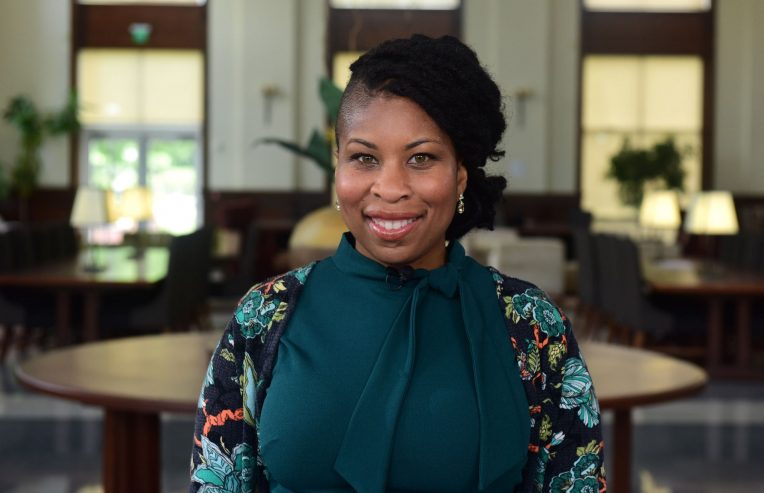Dr. Buffie Longmire-Avital, associate professor of psychology at Elon University, challenged the Redbird community to create and strongly support mentoring frameworks to help attract and retain underrepresented students during a January 27 virtual presentation.
“When we talk about inequities, we move away from talking about these general differences or thinking we can solve it just by enrolling students,” Longmire-Avital said. “We start really thinking about what the experience through the academy looks like, what it feels like.”
The talk, titled “Historically Underrepresented or Historically Excluded? The Creation of an Institutional Infrastructure that Amplifies Student Capital,” was presented to more than two dozen members of the campus community. The following day, Longmire-Avital led a workshop titled “Development of a Critical Mentoring Framework for BIPOC Student Success.”
The talk and workshop were a part of the College of Arts and Sciences Professional Development Series, “Equitable Re-Centering in the Pursuit of Sustainable Diversity and Inclusive Action.”
Longmire-Avital began her talk by presenting data showing that underrepresented groups are attending college or university at strong rates, but their graduation rates lag far behind that of white students.
She argued that it is more accurate to call students from historically underrepresented groups “historically excluded” instead. To illustrate this point, she shared a story of one first-generation Black student who approached her to seek a transfer because the student felt they were being excluded from campus life by their white peers.
“She started to describe how she was constantly feeling like she was interrupting a conversation when she would walk into her residence hall dorm room,” Longmire-Avital said. “And her roommates, who were all white, would be talking and then they would stop and kind of look at her, sometimes they wouldn’t include her in the various things and activities they were doing. What she started to describe was being paradoxically hyper-visible and invisible at the same time.”
The student would go on to tell Longmire-Avital that she had asked her Black peers if they had experienced anything similar. They told her that they had, but that they
were choosing to stick it out because they felt it was preparing them for the real world.
“She turned to me and that’s when she said, ‘Why on earth would I pay for the real world, when I can get it for free?’” Longmire-Avital said. “I didn’t have a response at the time and that is what haunts me.”
Longmire-Avital said answering that question will be vital to ensure that institutions can survive during an era of instability and uncertainty. She pointed out two ways to answer that question based on the values of the modern student. The first is a commitment to equity, diversity, and inclusion that is truly intersectional.
“Students are saying that they want to be at universities where they can see themselves and feel comfortable being their authentic self,” she said.
The second is ensuring that there is funding for traditionally excluded groups to participate in high-impact practices, including internship opportunities, learning communities, capstone projects, and undergraduate research.
“These kinds of gold standard experiences come with the potential of relationships in the form of really impactful mentorship,” Longmire-Avital said. “And that is still a big draw.”
She said institutional support for these mentors is vital to ensure the success of these programs.
“In simple terms, this critical mentorship is really about this commitment from the mentor to want to actively champion the success of their student above all other outcomes and intentionally centering students that have historically not been at the center,” she said.


